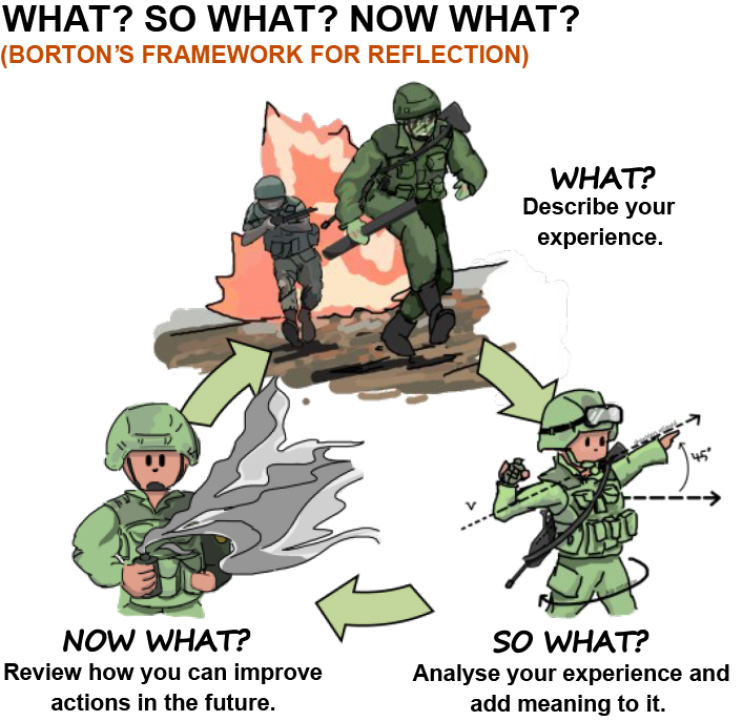Reflection
It is defined as the thinking over of issues or experiences to transform learning into leadership insights. The Practice of Reflection is the conscious thinking over of the issue or experience before, during or after an activity with the objective of helping SAF Leaders lead better in the future. By reflecting on their leadership experience, SAF Leaders gain a better understanding of the activity, enabling the achievement of better leadership performance in the future. Through reflection, SAF Leaders also “think about their thinking” and that could improve their leadership skills of Self-Awareness, Conceptual Thinking and Decision-Making. Reflection could also influence SAF Leaders' affective change that impact their values and character.
Journaling
It is defined as the recording of SAF Leaders' experiences, thoughts, feelings and insights which serves as a concrete record of the SAF Leader's leadership journey. Together the R&J Practice serves as a key LD practice for SAF Leaders.
Principle 1:
R&J is Part of a Leader's Learning Journey. The Practice of R&J occurs as part of SAF Leaders' experiential learning journey, which is similar to the Kolb's Experiential Learning Cycle. The R&J Practice for the SAF Leader starts from concrete experience, followed by reflective observation and conceptualisation, and finally taking actions that lead to leadership experience.
Principle 2:
Dedicating Time for R&J. To reap the benefits of R&J, dedicated time must be set aside for the practice. Only with dedicated time devoted specifically to codifying the leadership insights will SAF Leaders learn from their leadership experiences. The leadership learning could then be translated for their leadership development and leadership effectiveness.
Principle 3:
R&J Must Be Purposeful. The thought process in R&J is guided by SAF Leaders' intent to make sense of their experiences. In sensemaking, SAF Leaders should consider any aspect that perplexes or challenges the mind or causes uncertainty or doubt. The SAF Leader's thoughts during R&J are not unguided or purposeless as in a day-dream or reminiscence.
Principle 4:
R&J Must Be Objective and Based on Facts. When examining the issues and experiences, the SAF Leader must apply the mindset of a critical thinker to the reflection – where the meaning added to the experience is reliably grounded on evidence. Such evidence may be from present facts, reasonably implied facts or knowledge from past experiences. It is not enough for the leader to simply accept an answer without scrutinising it.
Borton's framework can be used as a guide for reflection & jounaling.

Phase 1: “What?”
At this phase, SAF Leaders frame the question and describe the experience, taking note of the events, who was involved, the decisions made, actions taken and the resulting consequences.
Phase 2: “So What?”
At this phase, SAF Leaders focus on the analysis of the experience and the construction of knowledge. Here, SAF Leaders add meaning to the experience, infer facts from the present situation or draw on knowledge from prior similar experiences.
Phase 3: “Now What?”
This is the synthesis of available knowledge. Here, SAF Leaders consider how they could improve, the possible consequences of their revised actions and decide on the best course of action going forward.
Additional Resource(s) Here: